Red Lentil Wraps | Cooked | Oil-Free

 Add to favorites
Add to favorites
When it comes to wraps, I love having options. They all come with different characteristics: size, flexibility, color, and flavor. Some are based in nuts, oats, rice, lentils, sweet potatoes — you name it. Another benefit with wrap options is the nutritional profile they have to offer. In a well-balanced diet, we need to eat a variety of foods to get a variety of nutrients. I wrote a post called Where and How Do I Get All My Nutrients? I recommend giving it a read. Today’s recipe is based in red lentils.
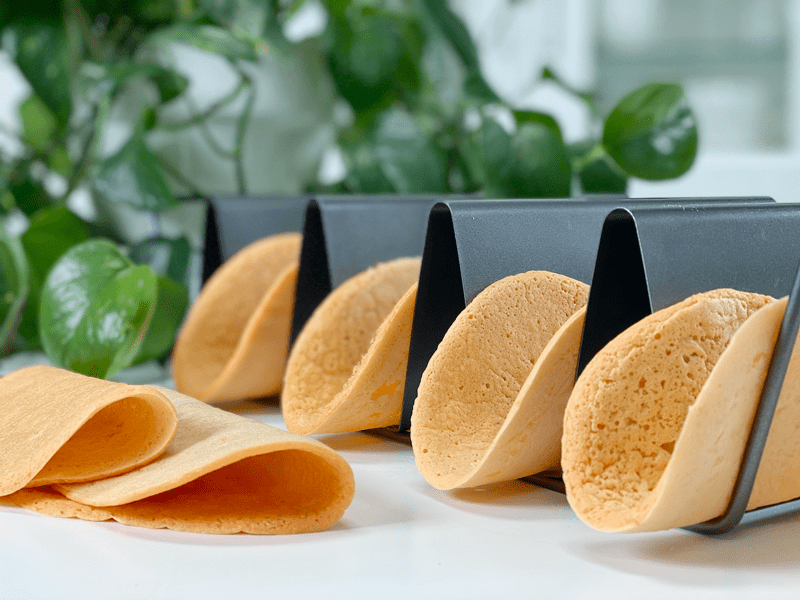
Lentils are inexpensive, highly nutritious edible legumes. They are a small round lens-shaped legume that comes in various textures, tastes, and colors like green, brown, black, yellow, and red. Among lentils, red lentils have a distinct, sweet flavor. They are an excellent source of fiber, protein, B-vitamins, and iron. With all of these wonderful attributes, you can sink your teeth into these wraps with great satisfaction.
What to Expect from This Wrap
- They will look and feel delicate, but they are actually pretty darn strong, making them willing and able to hold any filling you choose.
- As far as color, they will be a pale orange (like sherbet) on one side, and a bit darker on the reverse. I have seen other people post pictures and they are cream-colored. Hmm, not sure how they achieved that.
- I always smell the food I am cooking (habit). This recipe won’t fill the air with an aroma, so I lifted the cooked wrap right up to the nose, and much to my surprise, it reminded me of cantaloupe. I thought my sniffer broke, so I tested a few of them and yep, to me, that’s exactly what they smell like. (shrugs).
- Texturally, they are more on the spongy side and remain pliable.
- The wraps don’t offer much in the line of flavor, which may or may not be desirable. Often, we lean on the fillings to give us a punch of flavor. If you wish, you can add spices or herbs to the batter.
Tips and Techniques
The Pan
- You can use a well-seasoned cast-iron pan, a non-stick pan, or a griddle.
- If you don’t have a good non-stick surface, you will want to brush a thin coat of oil on it so the wrap doesn’t stick.
- I used an 11″ non-stick pan and I can comfortably make a 6″ wrap. I tried to make a large one, but due to the interfering sides of the pan, I couldn’t flip it without disrupting the aesthetics of the wrap.
- If you wish to use a griddle (like when cooking pancakes), you will be able to cook multiple wraps at once (size-dependent). Since griddles are stationary, you will need to spread the batter with the back of a spoon/ladle to the desired size.
Heat Setting
- I found that my induction burner (which I use in the studio) needs to be turned up a bit hotter than the stove in the house. Stove tops run at different heat levels.
- The key is getting the temperature to the right level where it doesn’t crisp up the edges and leave you with uncooked centers. If you experience this, turn the heat down a little.
Flipping the Wrap
- There is a sweet spot for flipping. Don’t worry if you mess up the first one that you make–I did! It’s part of the learning curve.
- The main thing is to make sure that you let the wrap cook long enough before flipping. It will bubble like pancake batter, and the edges will set.
- After about 90 seconds, slide the spatula under the edge and follow the circle, loosening the edges. If at any point batter sticks to the spatula, withdraw it, step back quietly, and take a few breaths. It needs to cook longer.
They are very pliable, so bend, fold, or roll them will your favorite fillings or just use them as a tasty sponge to mop up curries and sauces. I hope you enjoy this simple recipe. Please leave a comment below. Blessings, amie sue
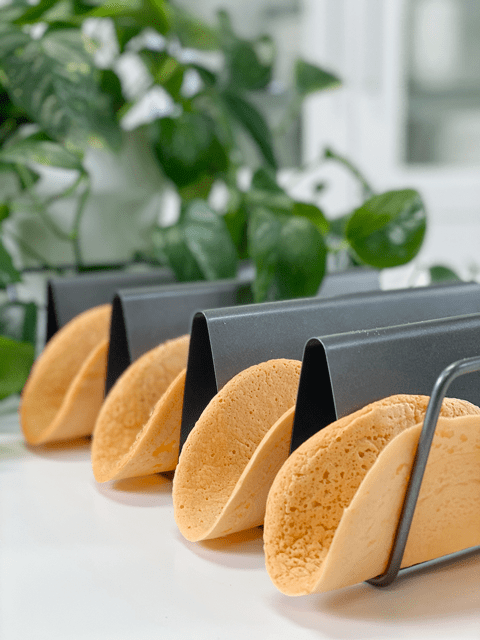 Ingredients
Ingredients
Yields 10 (1/4 cup measurement each)
- 1 cup red lentils
- 2 cups water
- 1/2 tsp sea salt
Preparation
- Soak the lentils in the water, along with the salt for 3-12 hours ( I’m giving you some wiggle room based on your schedule)
- DO NOT DRAIN THE LENTILS.
- Pour the soaked lentils (along with water) and salt into a blender and blend until creamy.
- The batter will appear somewhat fluffy once fully blended.
- Heat a nonstick skillet over medium heat (no hotter).
- If the heat is too high, the wraps will cook unevenly, leaving you with crispy edges and soggy middles.
- You can use a griddle, but since it can’t be picked up, you will need to spread the batter with the back of a metal spoon to a 6-inch circle.
- Ladle 1/4 cup of batter to the center of the pan and swirl into a nice circle.
- When the batter rests, the ground lentils sink to the bottom and collect around the blades. To ensure the lentil batter remains an even consistency, stir the batter before pouring.
- You can make larger wraps by using 1/2 cup of batter, but they take a little practice to flip, since they are twice the size.
- Cook until bubbles pop in batter, similar to cooking pancakes, for roughly 1-2 minutes. Flip and cook for 1 minute longer.
- If you try getting the spatula under the wrap but it sticks, cook it a bit longer. The spatula should slide under it easily.
- Transfer to a cooling rack while you repeat the process.
- The wraps are delicious cold but can be reheated on a tray in the oven.
Storing Wraps
- They are best served warm right after cooking.
- To store for later use, layer pieces of parchment paper between each wrap in an airtight container.
- They can be stored in the refrigerator for 5-6 days or in the freezer for 2-3 months.
- When ready to use stored wraps, allow them to come to room temperature, then reheat briefly on a warm skillet.
-
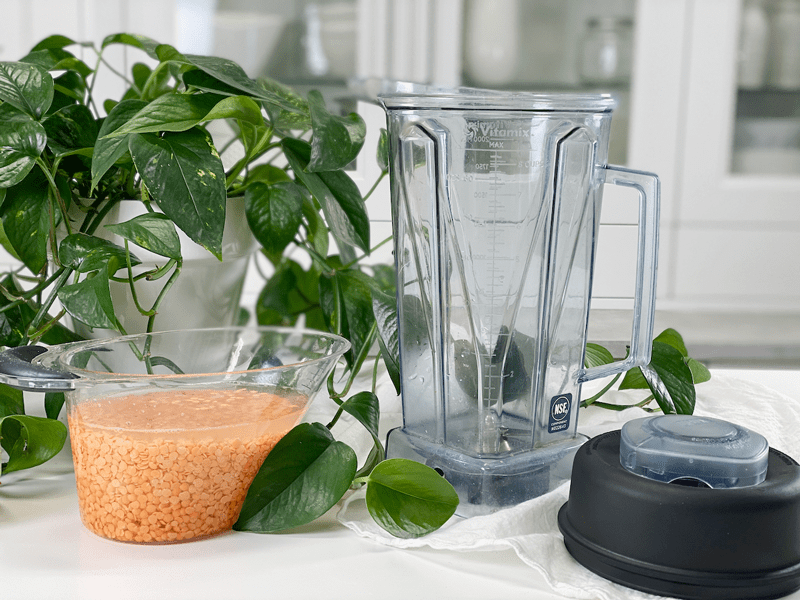
-
Soak the lentils in water for 3+ hours.
-
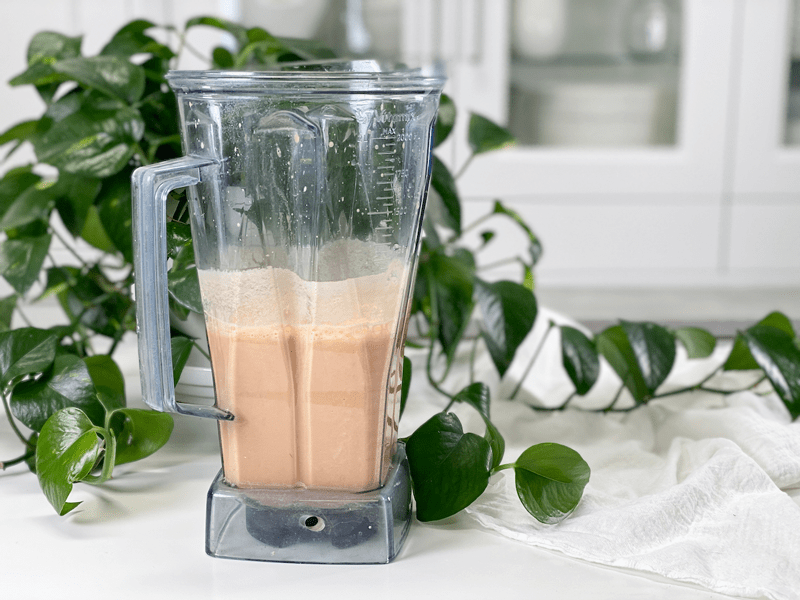
-
Pour the lentils, soaking water, and salt into the blender. Blend until creamy.
-
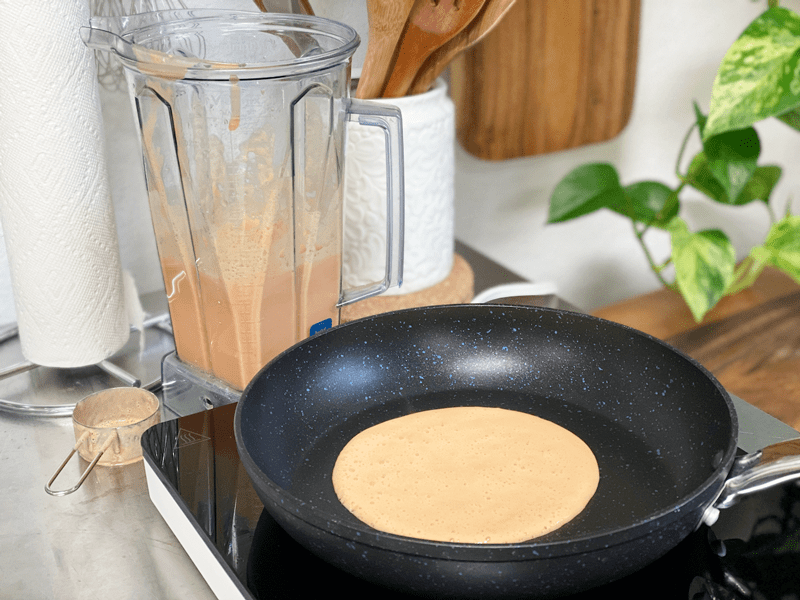
-
Pour 1/4 cup of batter to a preheated non-stick pan. Cook for 90 seconds or until you can slide the spatula under it.
-
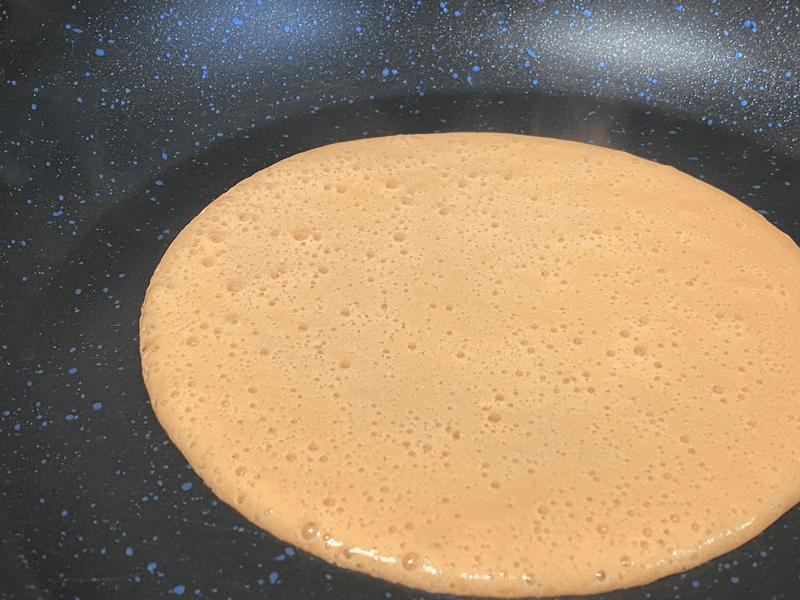
-
The batter will bubble like pancake batter. Once flipped, cook for an additional 30-60 seconds.
© AmieSue.com
Tags: Budget-Friendly, Gluten Free, Minimal Ingredients, Nut Free, Oil-Free, Starch Solution, Vegan



 Add to favorites
Add to favorites

 Ingredients
Ingredients
Hi there AmieSue. I would love to try this recipe, but I’m a little confused about using the soaking water. Isn’t that water full of phytates? In other recipes soaking water is usually discarded, so may I kindly ask you to give me some clarity on this. Thanks so much.
Good day, Newfoodie,
It is my common practice to soak all nuts, legumes, seeds, and grains… followed by draining and rinsing them before use. This recipe works best to skip that draining process and I personally don’t feel that it will be harmful since I watch the amount of phytic acid-containing foods I eat.
Here’s how I look at it —
Phytic acid is a substance found in many plant-based foods. This acid is the primary way phosphorus is stored in many plants, including beans, seeds, and nuts. When phytic acid is consumed, it binds to other minerals to create phytates. Because we don’t have any enzymes that can break phytates down, their nutrients cannot be absorbed into our body. If one’s diet lacks nutrition or has an iron or zinc deficiency, a person should reduce the amount of phytic acid you consume.
Plant-based diets are typically high in these phytic acid foods and many people struggle with eating a well-balanced diet… this is why I typically suggest that we soak and rinse these foods before consumption. It has been my personal practice for over 10 years and I notice a difference in doing so.
If you feel that you need to drain the water for this one recipe, by all means, do so. I would drain the lentils through a mesh sieve and catch the water in a bowl so you can measure the amount of water that you need to replace with fresh water. Does that make sense? I hope this helps. Keep me posted. blessings, amie sue
Dear Amie Sue, thank you so much for your prompt reply. I totally understand what you mean about measuring the water I drain out. I can see what you mean about moderating foods with phytic acid, so perhaps I’ll alternate with this recipe. I’ll let you know how it goes. All the best, Michelle.
Good morning Michelle,
You are very welcome. The goal is to make sure that you are eating a variety of nutritious foods daily and avoiding eating large amounts of a single food at one meal. This can help to offset minor losses in nutrient absorption caused by anti-nutrients. This is a pretty complex subject matter and is worth googling if you have other concerns. Enjoy and keep me posted. blessings, amie sue